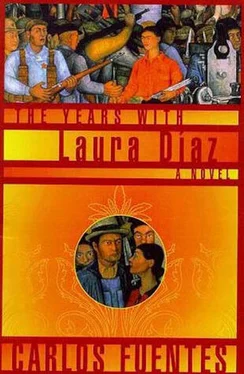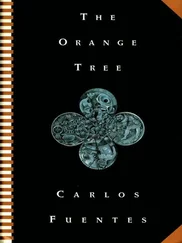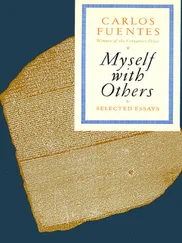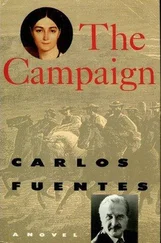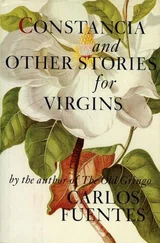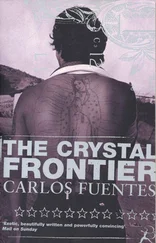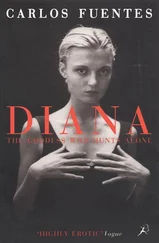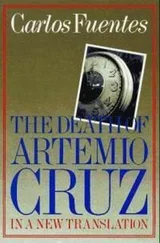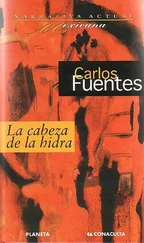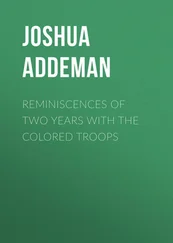All that remained to Laura Díaz was the photo she had taken of Frida Kahlo’s cadaver. It showed that death for Kahlo was a way to distance herself from everything ugly in this world, not to avoid it but to see it better; to discover the affinity of Frida, woman and artist, not with beauty but with truth.
She was dead, but through her closed eyes passed all the pain of her paintings, the horror more than the pain, according to some observers. No, in Laura Díaz’s photo, Frida Kahlo was the conduit of the pain and ugliness of hospitals, miscarriages, gangrene, amputations, drugs, immobile nightmares, the company of the devil, the wounded passage to a truth that becomes beautiful because it identifies our being with our essence, not with our appearance.
Frida gives form to the body: Laura photographed it.
Frida gathers together what is scattered: Laura photographed that integration.
Frida, like an all too infrequent phoenix, rises when touched by fire.
She was reborn to go off with the hairless dogs to the other neighborhood, to the land of Madam Baldy, La Pelona, Miss Toothy, La Dientona, Lady Toasty, La Tostada, Mistress Fancy, La Catrina, Charley’s Aunt.
She went dressed up for a party in Paradise.
With the photo of dead Frida in one hand and the camera Harry had given her in the other, Laura looked at herself in the mirror of her new apartment on Plaza Rio de Janeiro, where she moved after the earthquake had made the old house on Avenida Sonora uninhabitable. Danton, who owned it, decided to demolish it and build in its place a twelve-story condominium.
“I thought your father and I were the owners of our home,” said Laura in surprise but under no illusions, the day Danton visited her to explain the new order of things.
“The property’s been mine for a long time,” answered Laura’s younger son.
The mother’s shock was an act; the real surprise was the physical change that had taken place in the thirty-five-year-old man she hadn’t seen since Juan Francisco’s funeral, when Laura’s in-laws ostracized her.
It wasn’t the few gray hairs at his temples or his slightly larger potbelly that had changed Danton but his insolent mien, a display of power he couldn’t hide, not even in the presence of his mother, although, perhaps — precisely — he exaggerated it because she was there. Everything, from his hair, which he wore in the same cut Marlon Brando had in Julius Caesar , to the charcoal-gray suit, the narrow English regimental tie, right down to his black Gucci loafers, affirmed power, self-confidence, the habit of being obeyed.
With nervous self-assurance, Danton stretched out his arms to show his ruby-colored cuff links.
“I’ve got my eye on a sweet apartment for you in Polanco, Mother.”
No, she insisted, I want to stay in Colonia Roma.
“It’s getting polluted very fast. The traffic congestion will be terrible. Besides, it’s out of fashion. And it’s where the earthquakes hit hardest.”
And for all those reasons I want to live here.
“Do you know what a condominium is? The one I’m building is the first in Mexico. It’s going to be the fashion. Vertical property is the future of this city, guaranteed. You should get in on it before it’s too late. Besides, those apartments you like in the Plaza aren’t for sale. They’re rentals.”
Precisely. She wanted to pay her own rent from now on, without his help.
“What are you going to live on?”
“How old do you think I am?”
“Don’t be so stubborn, Mother.”
“I thought my house belonged to me. Do you have to buy everything to be happy? Let me be happy in my own way.”
“Dying of hunger?”
“Independent.”
“Okay, but call if you need me.”
“Likewise.”
With the Leica in her hands, Laura Díaz reacted in the same way to the dissimilar deaths of first Frida Kahlo and then Carmen Cortina in the year of the earthquake. Orlando made her remember the invisible, lost city of an asphyxiating misery and degradation that he had taken her to see that night after the penthouse party on Paseo de la Reforma. Now, camera in hand, Laura walked the streets in the heart of Mexico City and found them simultaneously crowded and abandoned. Not only did she fail to find that lost city, the true beggars’ paradise, where Orlando had taken her to convince her that there was no hope , but she discovered that the visible city of the 1930s was now the real invisible or, at the least, abandoned, city, left behind by the incessant outward expansion of the capital. The first block around the Zócalo, great center of the city’s celebrations since the time of the Aztecs, wasn’t empty — there were no open spaces in Mexico City — but it had ceased to be the center and was just another neighborhood, the oldest and in a certain way the most prestigious because of its history and architecture. Now a new center was springing up around the fallen Angel of Independence, on both sides of Paseo de la Reforma, neighborhoods named either for rivers or for foreign cities: urban Colonia Juárez and fluvial Colonia Cuauhtémoc.
Two thousand new people a day were moving into Mexico City, sixty thousand new inhabitants a month fleeing hunger, arid farmland, injustice, unpunished crime, brutal political bosses, and indifference; the capital, meanwhile, was alluring, with its promises of well-being, even beauty. Didn’t the beer ads promise top-caliber blondes, and weren’t all the characters in the ever more popular television soap operas also blond, rich, well-dressed upper-class types?
For Laura, none of this answered her questions about the unstoppable migratory flow: Where did these people come from? What was their final destination? How did they live? Who were they?
That was Laura Díaz’s first great photo-essay. It summed up the experience of a lifetime — her provincial origins, her life as a young married woman, her two experiences of motherhood, her loves and what her loves brought her: the Spanish world of Maura, the terrible memory of Raquel’s martyrdom in Buchenwald, the merciless execution of Pilar at the walls of Santa Fe de Palencia, McCarthy’s persecution of Harry, the double death of Frida Kahlo, first immobile death and then resuscitation by fire — she poured it all into a single image taken in one of the nameless cities springing up like loose threads and patches on the great embroidered sackcloth that was Mexico City.
Lost cities, anonymous cities built on the outskirts of the dry valley, amid rocky fields and mesquite trees, with houses nailed together any which way, caves made of cardboard and flattened tin cans, dirt floors, poisoned water, and dying candles (until the people’s ingenuity discovered a technique for stealing electricity from streetlights and the pylons supporting high-tension power cables).
Which is why the first photograph Laura Díaz took, after Frida Kahlo’s body, was of the fallen Angel, the statue smashed to pieces at the foot of its slender column, the bodiless wings, the split, blinded face of the model who, according to legend, posed for it, Antonieta Rivas Mercado, who years after went to Notre Dame in Paris to commit suicide in front of an altar because of her love for the philosopher José Vasconcelos, Mexico’s first Minister of Education. Vasconcelos’ memoir, Ulises Criollo , had caused a sensation in 1935 because of its frankness, and Orlando, in one of his most felicitous remarks, said, “It’s a book you have to read standing up.”
When she photographed the broken figure of the Angel who was the philosopher’s lover, Laura Díaz had to measure the seasons — in a city of “perpetual spring” that seemed never to have one. She realized she hadn’t really taken notice of how the years had passed. The city has no seasons. January is cold. Dust storms in February. March blazes. It rains in summer. In October, the storms remind us that appearances are deceiving. December is transparent. January is cold.
Читать дальше
